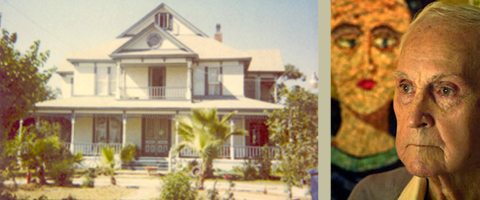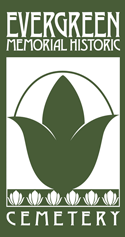
Left: The Riverside home owned by Cornelius Cole Smith, Sr., where “Corney” grew up. Right: Cornelius Cole Smith, Jr. and one of his paintings.
Cornelius “Corney” Cole Smith, Jr., was Officer of the Day in the Marine Corps barracks at Pearl Harbor on December 7, 1941. Corney led a small group of Marines through oily burning water to rescue more than 15 sailors who were blown off their ships in the Japanese attack. From May 1941 to October 1945, Smith served overseas and held commands at all levels from a platoon to a battalion. He spent much of his time in the Philippines where his father had served. Corney started his military career as a second lieutenant in the Marine Corps in 1937 and he retired as a colonel in 1967.
The Smith family had a heritage of military service beginning with the Revolutionary War. His ancestor, Thomas Smith, owned the property near Trenton, New Jersey, where Washington landed after his famous crossing of the Delaware River on Christmas Day, 1776. At the Battle of the Alamo in San Antonio, Texas, in 1836, his great grandfather William Sanders Oury, served as a courier. His grandfather, Gilbert Cole Smith, was a colonel in the Union Army during the Civil War. His father, Cornelius Cole Smith, Sr., was presented with the Medal of Honor for Valor during the Indian Wars.
Corney attended Riverside City College and earned a track scholarship to the University of Southern California (USC) where he studied architecture. He was influenced early by one of his USC art professors, Paul Sample. In 1949, Corney was designing buildings for the Arab-American Oil Company (Aramco) in Saudi Arabia when he met his wife, Grace Mantel, who was also working for Aramco there. The couple was married in 1949 in Egypt.
In addition to his career in architecture, Corney earned a doctorate in International Relations and became an author and an artist. In addition to many publications on the history of the southwest, he wrote “Don’t Settle for Second,” a biography of his father; “I Remember Riverside,” a pictorial history of Riverside for children; and “Remembrances of Things Past.” His paintings, drawings, and woodcarvings were exhibited throughout the west.

